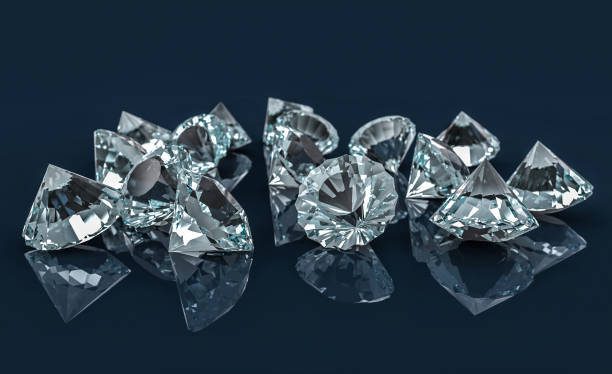
One of the most common engagement ring concerns is the loss of the center stone. Unexpected events can occur even after the stones have been tightened. Unfortunately, determining what causes a center diamond to fall out can be difficult.
Sometimes the ring is poorly made, and other times a hard blow to the setting damages it. Stones can fall out after a short period of time for seemingly no reason (which is why jewelry insurance is so important). Often, a stone is lost due to general wear and tear on a ring that has not been properly maintained or cared for. When you lose a ring stone, the diamond is usually loose in the setting at first and gradually works its way out.
To reduce your chances of losing a diamond from your ring, have it professionally checked by your jeweler at least twice a year. They will inspect all of the prongs and stones to ensure that there is sufficient metal in place and that all of the stones are secure.
More importantly, checking the stones yourself once a week or so is a good habit. Check the stones immediately if you believe you have hit your ring hard on something. This is not something you must do obsessively, and it is not intended to scare you.
Rings, even antique ones, are strong and long-lasting. Rings that are frequently worn, on the other hand, can suffer from wear and tear from being constantly in and out of gloves, rubbing up against things, and so on. It's critical to be more aware of the overall condition of your ring.
Your type of setting will determine which method you use to check the stone.
If you notice any movement in the stone or hear any rattling noises, take the ring to your jeweler and stop wearing it until it can be repaired.
When inspecting smaller side stones, it is critical to be even more gentle and precise with your examination. Wear magnifying glasses while performing the pin test.
Keep in mind that accent stones have far less metal holding them in place than focal stones, making them far more prone to becoming loose and falling out.
One of the most common mistakes people make with their rings is when they put them on and take them off. If the ring is too tight, the tendency is to pull with one finger on top of the stone and the other on the very bottom of the shank.
Attempt to resist the urge to do so. To avoid putting undue strain on your stones, put your thumb and index finger on the sides of the shank when putting on and taking off your rings.
Sell your diamonds with ease with Diamond Registry’s comprehensive approach and vast global industry connections to help you find the best buyer for your diamond fast. Visit www.diamondregistry.com/sell-your-ring to take your first step to fast, easy and reliable way of selling your diamond.
Want to check and calculate diamond per carat instantly? Go to DR’s diamond price calculator to know how. Reliable and trusted carat calculator in the diamond industry since!

